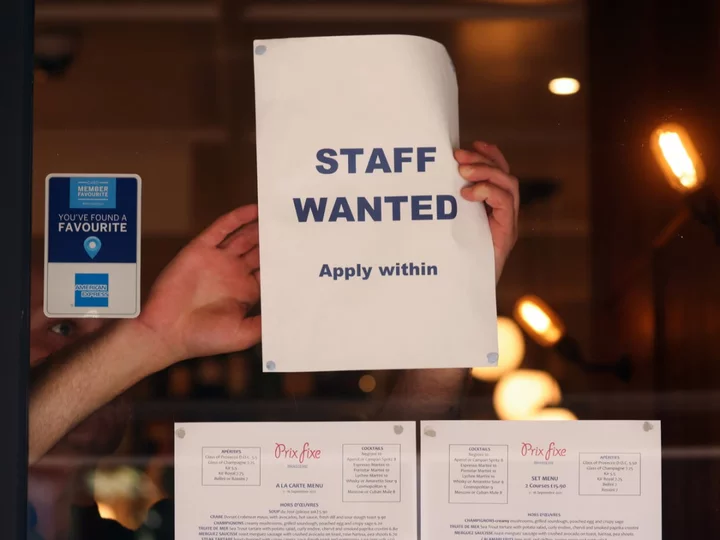
Between Brexit and Covid, London’s food scene has become a dog’s dinner – can it be saved?
London holds a special place in the hearts of food enthusiasts. In the halcyon days of the UK’s place in the European Union, it could even be said that the capital was one of the best cities in Europe – if not the best – for food. Despite it being beaten out by Paris in the Michelin guide (the French capital boasts 119 Michelin stars compared to London’s 74), the city’s sheer diversity made it stand out, with nearly every cuisine under the sun available somewhere in its streets. But recently it hasn’t really felt this way, and the people have noticed. Last week, Lily Allen tweeted: “Having been in New York for most of the time since Covid, I’ve spent long enough away to notice how far the standards have slipped in London’s restaurant scene… Delivery food and takeaways are even worse. Dunno if it’s Brexit or ghost kitchens or inflation or whatever, but it’s a terrible shame.” It’s evident from social media posts and online reviews that a lot of patrons feel the same. The restaurant industry has taken blow after blow in recent years, beginning with the UK’s messy divorce from the EU in 2016. And as it was trying to recover from Brexit, which resulted in increased costs, new bureaucracy and staff shortages, Covid hit. Restaurants were forced to shutter their doors for unknown periods of time, deal with confusing new rules, and magic whole new delivery systems out of thin air. Now, the industry is having to weather the cost of living crisis. In the face of all this, it might be a little cruel to denounce London’s usually thriving food landscape as “mediocre”. But, as painful as it might be, there is some truth to it. Ben Orpwood, a former contestant on the BBC reality series The Great British Menu, tells me that Allen’s observation, while perhaps a bit strongly worded, wasn’t completely wrong about the state of the industry. Orpwood, who was previously the executive chef at Gordon Ramsay’s Lucky Cat, has been cooking in some of the world’s finest kitchens for nearly two decades. But he says he’s never seen anything like the state of affairs at his latest opening, 20 Berkeley in Mayfair. “Normally when you first open a restaurant, the drop-off from the opening team [staff] is something like 20 per cent,” he explains. “You lose people who applied for something they’re not really ready for and opening week is very intense – so they go. But after we opened 20 Berkeley in June, apart from my core team, we had 100 per cent turnover. I’ve never seen anything like it.” He says that staff are leaving even with benefits like getting two meals a day, days and nights off, at least £13.50 an hour for employees with no prior experience, and a nice, conducive kitchen environment to work in – a far cry from the shouting and screaming he endured earlier in his career. “I had a pastry chef that left last week who worked 3pm-11pm, five days a week, no double shifts – he didn’t like how much work there was,” Orpwood marvels. “I can’t get my head around that mentality. The talent and the drive is just not there anymore, there are very few talented young chefs around and all the good restaurants are scrapping over them. When you’re going through that as a new restaurant, it makes it so much harder.” The chef, who has more than two decades of experience under his belt, explains that the aftermath of Brexit and Covid are primarily to blame. Brexit caused an exodus of EU citizens, many of whom questioned whether or not they were welcome in the UK. When Covid hit, more people returned to their home countries and discovered new work opportunities there, opting not to come back to British shores. “Then the government goes, ‘We’ll plug the shortage with young British workers’, except that they introduced needless academic requirements to apprenticeships with a minimum wage that people can’t pay their rent on,” Orpwood adds. The national minimum wage for apprentices aged 21 in their first year is £5.28 an hour, while the average rent for a room in London has rocketed to almost £1k a month. To say that we’re mediocre, I don’t really think it’s a fair reflection Ben Mulock Of course, some industry folk are more optimistic. Ben Mulock, executive chef of Balans, says: “The London food scene for me is still vibrant, it’s still innovative. We still have some great authenticity to it.” However, even the most positive outlook can’t ignore the biggest, most glaring problem restaurants currently face: the skills shortage. “I’ve been cooking since I was 14, and it’s never been like this throughout my entire career,” Mulock laments. “But we are striving and pushing our standards higher to try and give people the experience of years gone by with this new workforce. So, to say that we’re mediocre, I don’t really think it’s a fair reflection.” He adds that people who live in the capital have “some of the most discerning palates globally” and that feeding a London crowd “isn’t an easy thing to please”. “But when you get it right, it’s a wonderful, wonderful feeling,” he says. Perhaps, for anyone who lives outside of London, the bar has been set at an artificial high. Influencers invited to restaurants that have a marketing budget are more likely to post gushing reviews, complete with mouthwatering visuals as they stuff their gobs. Meanwhile, restaurant critics for broadsheets have been recently criticised for platforming establishments in more affluent areas, or only if they’ve been invited. Given some publications don’t pay for reviewers’ meals, this is unavoidable – but it generates a false economy in which readers believe those are the best places to eat. In his essay “London Finds Itself”, Vittles editor Jonathan Nunn wrote about the decline of reviews and the rise of simplified maps that pinpoint places to eat, which also manifests itself in lists. It’s why the algorithm adores those “10 stunning places to eat in London” videos, and why publications are desperate to churn out recommendation lists. He wrote: “The review is too discursive, too expensive to produce, written by people who demand to be paid properly. Far better to shop it all out to a freelancer who can google a bunch of stuff and stitch it together without context.” One has to wonder if this, too, has contributed to restaurants falling short of expectations – perhaps no one is looking closely enough. But Hugh Smithson-Wright, a communications specialist for restaurants, says that the food scene is no more mediocre than it’s ever been; in fact, there have always been plenty of middling eateries around. “Not everyone can be so great,” he says. “Some of my favourite restaurants have been places where food is absolutely fine.” But there’s a distinction to be made here. “Fine is OK if it’s not costing you a lot of money. Expensive is fine if the food is incredible. But now, with everything being so much more expensive for everyone on every income level, the places that are fine are getting more expensive, with smaller portions and cheaper produce, and that’s what we’re not tolerating.” Smithson-Wright points to the fate of Prezzo as a perfect example of this reduced level of tolerance. In April, the Italian restaurant chain closed 46 of its 143 branches and said it was due to soaring energy and food costs – but Smithson-Wright adds that its uninspired food was also a factor. “Prezzo was only fine – it wasn’t great or innovative, but as those prices go up, OK is not good enough. It’s these types of mid-range restaurants, whether chains or independent, that will find they have nowhere to go. They can’t suddenly make their food luxurious, and equally, they can’t suddenly charge the prices they perhaps need to be charging to keep the lights on.” Price is a painful topic right now, resulting in a bitter stand-off between some patrons and restaurateurs. But Britons have historically been averse to paying more for their food, lulled into a false sense of security by the cut-throat price war between supermarkets. Or a sense of: if I can spend less than £5 on a Sainsbury’s ready meal, why are restaurants charging three, four, or five times that for a main course? But, as Smithson-Wright points out, the “bravest thing a restaurant can do is charge what they need to” without fear of empty seats. “In some ways, restaurants punish themselves by not charging what they should and now they’re stuck in a mediocrity trap,” he says. “And they’re not helped by the psychological barrier people have over what they will pay for things.” So what does this mean for the future of food in London? The restaurant industry, as a whole, isn’t about to die any time soon. As Orpwood says, this is a resilient industry and will “just get on with it” until it comes out the other side with hopefully greener grass. Smithson-Wright adds that the current situation sounds a death knell for mid-level restaurants, many of which will not survive this period. But Mullock tries to offer a sunnier disposition. “The London food scene is alive and it’s doing some really good things. Everyone’s just pursuing deliciousness.” Read More Sorry lads, we just can’t afford any more reckless, middle-aged adventurers The dish that defines me: Alex Outhwaite’s Vietnamese bun cha Nappy changes and tantrums over Michael Gove: I took my one-year-old to a music festival Sunak rules out any new EU trade deal that undermines Brexit freedoms Tory MP broke rules over £150,000 loan from Russian businessman What is the future of the Conservative Party?
2023-07-19 13:52
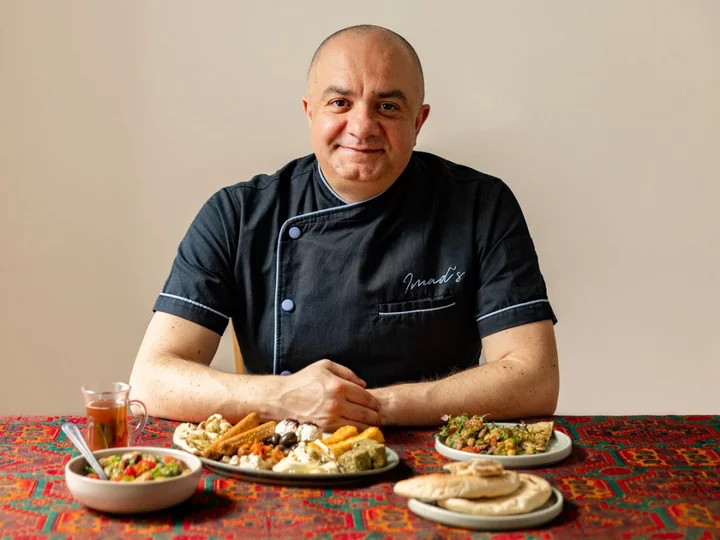
Imad Alarnab: In The Jungle, food restored our faith
Food can bring people comfort in the darkest times, and for Imad Alarnab, this time came when he was stranded as a refugee in Calais for more than two months. A hot plate had been donated, people collected leftovers from supermarkets, and having been a successful chef back in Damascus – with three restaurants, and a string of cafes and juice bars – Alarnab did what he did best, night after night, he cooked. “It was just something I felt like I needed to do, because you get to make a lot of people happy. Especially at that time, they needed something to be happy about,” says the 45-year-old, who would feed as many as 400 people at a time. The overcrowded camp that became known as The Jungle was close by, but Alarnab says it was too terrifying and overcrowded, so he and a group of several other Syrians slept on the steps of a church instead. And it was here he cooked the food of home – adapted, of course, depending on what they had. “To have a decent warm meal – for people whose lives have been on hold, they can’t cross to safety – was a big deal for all of us,” says the father-of-three. In fact, it was the first time he’d cooked for lots of people since all of his businesses were bombed within a week in 2012, in the country’s civil war, and this was the moment hope returned. “I think it restored all of the faith that things could, and would, get better,” Alarnab writes in his debut cookbook, Imad’s Syrian Kitchen. By July 2015, he’d made the painful decision to leave his wife and three daughters in Damascus to make the treacherous journey via Lebanon, Greece and North Macedonia, to the UK, where they had relatives. With his children too young to make the journey, the family planned to join once he’d been granted asylum. “If I had any other choice, I would have definitely taken it. [Fleeing] wasn’t the easiest but it was somehow the safest,” he says. “When I was in Syria during the war, people were saying, ‘It’s not safe to go out of the house because maybe you’re going to die’. But I needed to feed my family, if I stayed in the house they would die from hunger. There’s no good choice or bad choice, but maybe it’s the only one you can make. “When I was leaving Damascus, my oldest daughter made me promise I would see her within one year. I said, ‘Yes, I promise,’ but I wasn’t really sure if I was going to keep that promise or not.” And during the three months before he reached the UK – walking hundreds of miles on foot, on train, in the back of cars, on push bike, at the mercy of smugglers, with false IDs and the kindness of strangers – there were moments of doubt, like when he was crammed in the back of a lorry in Turkey for seven hours. “There were about 95 of us, I felt it was a stupid decision, risking my life so much. I believe the driver was so scared, or maybe drunk – the speed was absolutely scary. I thought we were not going to make it.” His journey ended eventually by using a fake passport to cross the Channel in October 2015 (the moving, often harrowing, story is weaved through his new cookbook), and first finding work illegally in a car wash, where he also slept as an overnight security guard, sending money home. After his family were able to emigrate (just under the year he’d promised his daughter) someone introduced him to the Cook For Syria scheme – and soon he was hosting super clubs at his house. By May 2021, he’d opened his London restaurant, Imad’s Syrian Kitchen. His first cookbook is a combination of dishes served up at the restaurant and his late mother’s recipes. “Almost every single dish is somehow related to my mother – I keep seeking her approval in everything I do in life, but especially with cooking,” he says. It was his mum, Summer, who first taught him to cook. “Even if you create your own recipes, somehow you will [always] be inspired by your first teacher”. She died very suddenly while Alarnab was living alone in a caravan in west London. Syrian food at its heart is “simple, first of all, and affordable for everyone”, he says. “We use a lot of mild spices, not very hot spices.” They’re mostly things you’ll know; “cumin, mint, garlic, nothing really special about it. [but] you put it together in a special way”. Middle Eastern in identity, much of it might feel familiar; tabbouleh, hummus, baklawa; while traditional dishes include buttered halibut, jaj bailfurn (grilled chicken thighs) and kippeh (lamb and bulgur wheat dumplings). Lunch is typically a feast of many dishes. “We’re a family of five and we never ever have one dish for lunch,” says Alarnab. “And we don’t throw anything away.” Before the war – which began as an uprising against President Bashar al-Assad in 2011 but has since involved a complex number of groups fighting one another, including so-called Islamic State, leaving at least 11 million people displaced – Alarnab was one of the lucky ones, he says. “We had a comfortable life, but most people in Syria were suffering. When you have a dictatorship for more than 50 years, of course people will be suffering. You cannot explain life without freedom to someone who’s lived all of their life with it. “People keep asking me silly questions – ‘Why did you have to go to 10 different countries to come to the UK? You could just get a plane ticket straight from Lebanon to Heathrow’. No, it doesn’t work like that. As a Syrian, my passport takes me to three countries – war zone countries. Even if I wanted to go to every country supporting Assad, I’d still need a visa.” Once the fighting started, food, that once brought him so much joy, lost all meaning. “I don’t know how to describe it, but the food tasted like blood. I know it’s disgusting, but nothing tasted the same. When you live in fear for your family, when your daughters are not safe to go to school, food will taste [bad], nothing can make you happy.” Cooking Syrian food now makes him feel “connected” to his home country, of course, “but it also makes me feel part of this unique community in the UK”. Arriving in London, he says: “I felt safe, I felt ‘I can be different, I can be myself, no one cares’. Everyone’s so different, it makes all of us lookalike.” Even after starting from scratch in a new country after losing everything, with a highly-acclaimed restaurant and now a cookbook, he’s most proud of his daughters. His eldest is studying at Warwick University after gaining straight As, his middle child is a talented artist. “The youngest [13] is the naughty one still,” he laughs. “But you can feel they appreciate their life – they are so happy about it.” ‘Imad’s Syrian Kitchen’ by Imad Alarnab (HQ; £26). Read More The National Portrait Gallery’s new restaurant is fabulous upgrade The dish that defines me: Alex Outhwaite’s Vietnamese bun cha 3 TikTok-approved recipes for picnic season It’s easier to make baklava at home than you might think Get set for Wimbledon with top pastry chef’s strawberry recipes Pinch of Nom: Healthy eating doesn’t have to cost the earth
2023-07-19 13:51
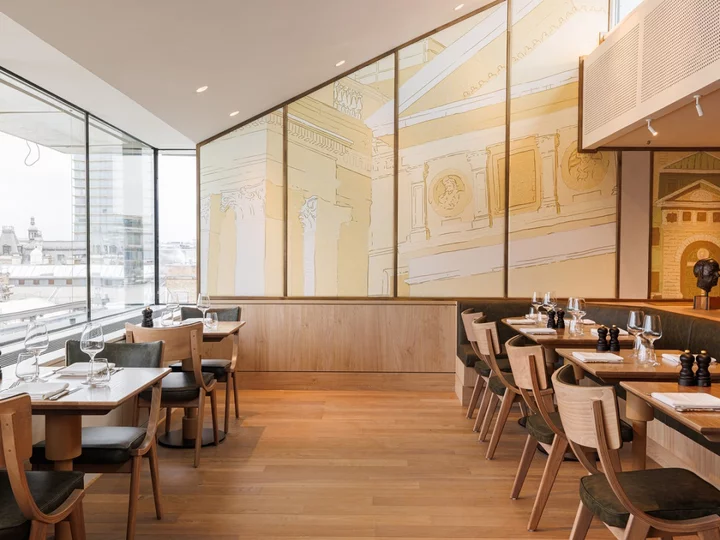
The National Portrait Gallery’s new restaurant is a fabulous upgrade
It’s possible that you’ve never paid much attention to London’s gallery and museum restaurants, but once you start looking for them, there are many. The British Museum’s Great Court Restaurant, under its iconic glass ceiling; Skye Gyngell’s temple to veg, Spring, at Somerset House; high-end tapas at José Pizarro at the Royal Academy of Arts. They’re not the edgiest joints in town, nor somewhere you’d drop in for an impromptu bite. Instead, what they’re great for is a gift – an art fix and a posh lunch or dinner as a day out. I have such a food-and-art pairing in mind when I take my dad to The Portrait, the new Richard Corrigan restaurant at the National Portrait Gallery. Tucked at the top of the Trafalgar Square building, in a former glass-edged event space where windows are filled with a pleasing cityscape of London rooftops, it opened on 5 July, the final touch to a major three-year renovation of the gallery that finished in June. It’s open for lunch Sunday to Tuesday, and both lunch and dinner Wednesday to Saturday. The Portrait also opened just days after the launch, to much fanfare, of Sir Paul McCartney’s NPG exhibition Eyes of the Storm. A behind-the-scenes look at The Beatles’ dizzying rise to fame in 1963 and ’64, followed by fine dining, sounds right up mine and my dad’s street – a classic central London day out. The NPG has certainly had a glow-up since I last visited. A polished new entrance hall and welcome desk, gliding escalators, vividly painted galleries and rehung portraits. After marvelling at McCartney’s handwritten lyrics to I Wanna Hold Your Hand, and the youthful ease and joy of an off-duty John Lennon frolicking in Miami, we drop in on the Tudors before heading up to The Portrait. It’s a rather corporate-feeling but convivial scene, with linen-trousered and pastel-shirted guests talking art over elegant plates of fish and meat, gleaming glassware and white napkins. What jazzes up the simple pine tables and steel-framed open kitchen is the view: a long, slim panorama featuring the National Gallery’s ornate dome, the London Eye, Nelson’s Column, the Houses of Parliament and the tower of St-Martin-in-the-Fields. Along one sloping wall is a butter-yellow mural of the gallery’s exterior, which marketing materials tell me are bespoke linen panels by wallpaper-maker-to-the-stars de Gournay – but otherwise the Brady Williams Studio has kept the design light and minimal, letting the view, and the food, do the talking. Here’s what it has to say: instantly intriguing things about artichoke with crab mayonnaise and kombu (kelp seaweed powder), “snails bolognaise” over conchigliette, a duck heart vol au vent, pig’s trotter with borlotti beans and something described only as “cauliflower, yeast, seeds”. (We skip that one.) Much of it is what you’d expect from Corrigan – earthy flavours from the UK and Ireland, plenty of fish and veg present, but with a few curiosities thrown in. We kick off with Carlingford oysters zinged up with ginger, lime and coriander – “This is no stuffy seafood restaurant”, they clearly declare. My dad is presented with his artichoke starter, a glorious fan of outer petals cupping a nicely roasted centre, topped with a crab-rich seafood sauce and umami-packed powder. Both are light, flavour-packed and made for a champagne toast. Next we dig into that escargots bolognese, and pork with barigoule of fennel and apricot mustard. The bolognese is rich and nicely seasoned with a pleasantly meaty texture, but the pasta shells fall slightly flat with a fairly bland, creamy sauce; I long for a more moreish dish where the pasta enhances rather than simply supports the bolognese. The Huntsham’s Farm pork wins more points with its melting richness, set off by the vinegary tang of the fennel and peppery-fruity sauce. Our friendly and approachable waiter talks through some wine-by-the-glass options for us, picking out a refreshing Sauvignon Blanc and a Chianti to suit our respective dishes. Service is quick and efficient, but with no trace of being rushed through and out – there’s plenty of time to linger and talk over the view. Which we do for well over an hour and a half, given we can hear each other clearly (always a bonus for a dad and daughter meet-up). Unusually for both of us, we indulge in a pudding: I can’t resist the English cherries with goat’s milk ice cream, a fabulous clash of jammy sweetness and savoury tartness. Dad goes for the rum baba, soaked in a generous boozy sauce with enough fresh pineapple to cut through the sweetness. Like our choices of sides – olive oil mash and broccolini with almonds – everything is instantly appealing while having some sort of flourish we may not have had before. When I thought of a gallery lunch, I pictured perfectly fine fish fillets and chicken cutlets, rather than my first snail pasta dish, my first goat’s milk ice cream and my first Asian-spiced oyster all in one sitting. With dainty-portioned mains at £22-£32, there are no bargain bites, but the style of food and the option of set menus (£28 for two courses, £35 for three) feels nicely suited to an exhibition ticket as a present or treat. You could easily jazz up that £28 prix fixe with a £15 glass of champagne or The Portrait’s strawberry and balsamic bellini. A meal here can be as good value and restrained or lavish and decadent as you make it – surely true of any day out in the capital. And with most of the National Portrait Gallery free to view (not to mention freshened up, with the visitor experience streamlined) it’s a fabulous upgrade for a low-key afternoon of art. The Portrait Restaurant, The National Portrait Gallery, St Martin’s Place, London WC2H 0HE | 020 3872 7610 | theportraitrestaurant.com Read More The Union Rye, review: Finally, a decent restaurant in this charming East Sussex town Forest Side: Heavenly Cumbrian produce elevated to Michelin-starred proportions Papi: Pandemic troublemakers’ restaurant is a fun, flirty hit The dish that defines me: Alex Outhwaite’s Vietnamese bun cha 3 TikTok-approved recipes for picnic season It’s easier to make baklava at home than you might think
2023-07-18 19:49

Tom Kerridge addresses backlash to his £35 fish and chips at Harrods: ‘They shout at me’
Tom Kerridge has defended charging £35 for fish and chips in luxury department store Harrods, explaining the quality of the ingredients and labour that go into the dish. The celebrity chef, 49, came under fire earlier this year for the costly dish at Kerridge’s Fish and Chips, which comprises of line-caught turbot and hand-cut potato chips. Some angry customers called the portion of fish “scrawny”, while others criticised the “thimbles of sauce” that accompanied the dish. But the Michelin-starred Kerridge – who has dealt with criticism of his prices in the past, including for an £87 sirloin steak in his Buckinghamshire pub – detailed the difference between his dish and a regular chippy’s fish and chips. Speaking to the Radio Times, Kerridge said that the backlash no longer affects him and he’s “learnt to deal with it”. “I’m seen as a man of the people, so when I put fish and chips on for £35, they shout at me for it being expensive,” he said. “But the people criticising me don’t understand how it’s priced. Fish and chips was always seen as cheap, fast food, and I get that because of where I grew up.” Kerridge went on to explain the supply chain behind a portion of fish and chips, saying: “The fish in most chippies is frozen at sea, in a big block, a year ago, then cut up and portioned. “The potatoes are maybe four weeks old, have gone through a chipper, been cleaned and put into cheap oil. They’re wrapped in paper, with malt vinegar and salt.” Kerridge clarified that he does “love” regular fish and chips, but that the dish he serves in Harrods is different. “At Harrods, it’s line-caught, day-boat turbot,” the Great British Menu judge said, referring to fish that is caught using traditional fishing methods by fishermen who go out to sea and return on the same day. “The potatoes are specifically sourced for their sugar and starch content, then individually cut up by a person. It’s bespoke dining in the most exclusive and beautiful shop in the world. Of course it’s expensive,” he added. In 2021, Kerridge defended the prices at his pub, arguing that they “include everything, VAT and service”. “No additional service charge at all. Also I pay staff properly and treat their job as a professional career. Perhaps the real cost of dining should be addressed,” he tweeted in response to a critic. “Unpretentious does not mean cheap. Also, why is profit a bad word?” Kerridge opened his first pub, The Hand and Flowers, alongside his wife Beth in 2005. Within a year, he had gained his first Michelin star. Since then, the TV personality has been given three Michelin stars, including a second for The Hand and Flowers, and the third for The Coach. He has appeared on numerous TV programmes such as MasterChef and Saturday Kitchen, and currently presents Food and Drink for BBC Two. Read More Sorry lads, we just can’t afford any more reckless, middle-aged adventurers Cruise line apologises after passengers witness dozens of pilot whales being slaughtered Delia Smith denounces vegan diets as ‘wrong’: ‘Don’t say you’re helping the planet’ 3 TikTok-approved recipes for picnic season Fans swoon over Stanley Tucci cooking dinner for Robert Downey Jr at ‘Casa Tucci’ The dish that defines me: Alex Outhwaite’s Vietnamese bun cha
2023-07-18 18:16
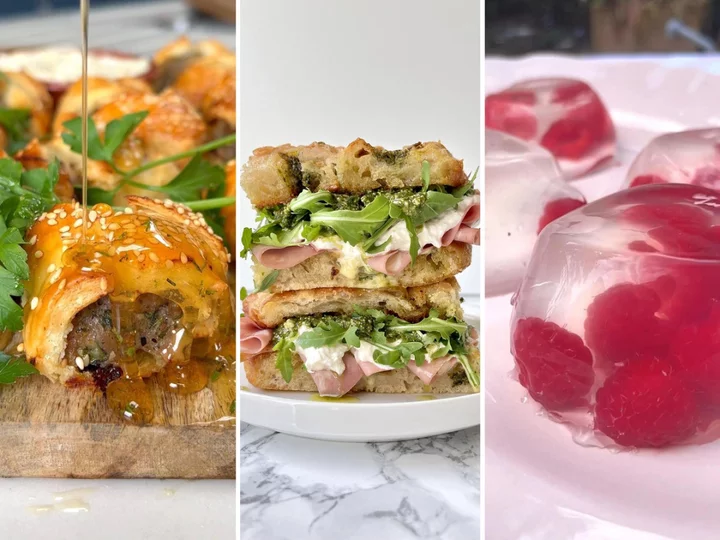
3 TikTok-approved recipes for picnic season
Grab your baskets and your blankets because it’s National Picnic Month (AKA it’s summer guys, just get out there). Nothing says dining al fresco in Britain than a sausage roll, but the recipe for honey and mustard sausage rolls below is so incredibly good you’ll want to make them all the time. The same goes for sandwiches, as long as they’re not soggy. Sometimes you dream about sandwiches, hoping they’ll be as delicious as you dreamed. Well, the mortadella, pesto, burrata focaccia sandwich with garlic confit aioli one below is. It has crisp pesto focaccia, pesto, burrata, mortadella, rocket and a homemade garlic confit aioli. Don’t forget dessert! These elderflower and raspberry jellies are so easy to make, transport and, most importantly, devour. Honey and mustard sausage rolls These honey and mustard sausage rolls are so incredibly good you’ll want to make them all the time. We’re using Asda’s Extra Special Orange Blossom Honey sourced from bees that feed on orange blossom in Spain and Mexico giving it a sweet citrus scent. Stirred into the filling and mixed with some fresh thyme to drizzle over the hot pastry when they come out of the oven. Just heaven! Serves: 6-8 Prep time: 35 minutes | Cook time: 25-30 minutes Ingredients: For the filling: 1 pack of Asda’s Extra Special Cumberland Sausages 1 heaped tbsp grainy mustard 1 tbsp Asda Honey Blossom Honey 2 tbsp chopped parsley Salt and pepper 1 sheet ready rolled puff pastry 1 egg, beaten Sprinkle of sesame seeds For the drizzle: 5 sprigs of thyme, leaves only 1 tbsp honey For the dip: 3 tbsp mayonnaise 1 tbsp grainy mustard Method: Preheat the oven to 200C. Line a baking tray with parchment. Remove the sausages from their skins and place the sausage meat in a bowl. Add the mustard, honey, parsley and season well. Stir to combine. Place the pastry on a board and cut in half lengthways. Divide the pork mixture in two. Place one portion of the meat on the long edge of one piece of pastry and shape into a sausage roll shape, pinching the seam and rolling it over so the seam is underneath. Repeat with the other roll. Brush with some beaten egg. Slice into portions and scatter with sesame seeds. Place on a baking tray and bake for 25-30 mins until golden and cooked through. For the drizzle, heat the honey gently in a pan for a minute and add the chopped thyme. Drizzle over the hot sausage rolls just before serving and serve with the mustard mayo dip. Enjoy! Mortadella, pesto, burrata focaccia sandwich with garlic confit aioli Sometimes you dream about sandwiches, hoping they’ll be as delicious as you dreamed. Well, this one is. It has crisp pesto focaccia, pesto, burrata, mortadella, rocket and a homemade garlic confit aioli. Serves: 1 Prep time: 15 minutes Ingredients: For the garlic confit aioli: 10 garlic confit cloves 1 cup garlic confit olive oil 1 tbsp lemon juice 1 egg Pinch of flakey sea salt For the sandwich: 2 slices pesto focaccia 1 x burrata 4 tbsp green basil pesto 75g Italian mortadella 25g wild rocket Method: Make the garlic confit aioli: Place all ingredients into a glass container or jug that is just wide enough to fit a hand blender. Blend all ingredients together while slowly incorporating all of the oil. Continue until you have a thick consistency. Store in an airtight container or jar in the fridge for up to 3 days. Assemble the sandwich: Cut your focaccia into thirds lengthways. Slice 1 piece of the focaccia in half. Drizzle cut side with olive oil and toast in a pan until golden. Assemble your sandwich by beginning with a layer of the garlic aioli, a spoon of pesto, followed by slices of the mortadella, burrata, torn in two, and rocket, finished with a pinch of salt and pepper. Top with the other half of the focaccia and cut in half. Enjoy! Elderflower and raspberry jellies These elderflower and raspberry jellies were always on the menu when I catered for parties and people always chose them. They were so popular, and they’re so easy to make. Serves: 6 Prep time: 15 minutes | Cooling time: 4 hours overnight Ingredients: 8 sheets leaf gelatin 350ml elderflower cordial 1 punnet raspberries Cream or ice cream (to serve) Method: Soak the gelatin in cold water for a few minutes, then drain. Pour 100ml of boiling water over the gelatin and stir to fully dissolve. Allow to cool for a couple of minutes, then stir in the elderflower cordial and 250ml of cold water. (I always wet the inside of the jelly mould if I’m planning on turning the jellies out afterwards before I add the jelly mixture). Divide the raspberries into glasses or ramekins or a large glass bowl and pour over the liquid. Cover and put in the fridge to set for at least 4 hours-it works best if left overnight. (If you want the berries to be suspended in the jellies, pour a third of the mixture into the moulds and set in the fridge, then add the berries so they lie on top of the set layer and pour over the remaining mixture). To remove from the mould, if using, dip the bottom briefly into a bowl of hot water, cover with a slightly larger plate and with one confident movement, invert the mould so that the jelly lands neatly onto the plate. Serve the jelly with cream or ice cream. Read More The dish that defines me: Alex Outhwaite’s Vietnamese bun cha It’s easier to make baklava at home than you might think Get set for Wimbledon with top pastry chef’s strawberry recipes Pinch of Nom: Healthy eating doesn’t have to cost the earth ‘Deliciously indulgent’ one-pot chilli mac and cheese Can’t decide between a cookie or a brownie? Now you don’t have to
2023-07-18 13:51

Fans swoon over Stanley Tucci cooking dinner for Robert Downey Jr at ‘Casa Tucci’
Robert Downey Jr was lucky enough to get an invitation for dinner at Stanley Tucci’s house over the weekend. The Iron Man star, 58, sat down with Tucci in “Casa Tucci” and was treated to an Italian feast of pasta and the seafood dish cod alla livornese, which comprises of cod in a tomato sauce with capers, kalamata olives and garlic. Downey Jr shared a video on Instagram showing the Big Night star cooking up a storm in his kitchen. The clip also showed Downey Jr eating and closing his eyes in satisfaction, before giving Tucci a kiss on the cheek after the meal. The Oppenheimer actor also praised Tucci’s wife Felicity Blunt, whose sister is his co-star Emily Blunt, for welcoming him into their home. He wrote in the caption: “Dinner @ Casa Tucci – Truly a gem of a fella and Felicity made me feel like family. Check out Stanley Tucci in Searching for Italy.” Tucci also posted his own video about the dinner and revealed he threw the dinner party for 11 more people. He gave fans a short rundown of all the ingredients in the cod alla livornese and showed off the finished product before serving up. Fans reacted adoringly to Tucci and Downey Jr enjoying one another’s company at dinner, ahead of the release of Oppenheimer, directed by Christopher Nolan. The film, about the making of the atomic bomb, is out on Friday 21 July. “My brain may have stopped functioning because [Robert Downey Jr] and Stanley Tucci, two of… Just… I can’t,” one fan wrote on Twitter. Another said: “Stanley Tucci and Robert Downey Jr?? This is everything to me!! I’m in tears, look at them.” One person even tried out the recipe that Tucci cooked for themselves and was effusive about how tasty it was. “I’ve been eating a lot of meat lately, so decided to opt for fish for lunch. I never cook cod, but Stanley Tucci posted a video of himself cooking [cod alla livornese] for friends and I got inspired to try something new. Y’all, this is one of the best thing I’ve made in a minute.” Tucci has many fans who love his recipe videos for dishes and cocktails on social media. One of his most popular videos, posted in 2020 during the Covid lockdown, showed the travel show host demonstrating how to make his favourite cocktail, a negroni. Earlier this month, Tucci admitted that he tried to break up with his now-wife Felicity because of their 21-year age gap and said he was “afraid” to get into a relationship because he “didn’t want to feel old for the rest of my life”. “But I knew this was an incredibly special person,” he told Radio 4’s Desert Island Discs. “Felicity has been so incredible taking on a widower and three children. That’s a huge thing, at a very young age too. If anybody made things better for all of us, it’s her. She’s the one.” Before marrying Felicity, Tucci was married to Kate Spath-Tucci for 14 years and shared twins Isabel and Nicolo and daughter Camilla. Kate died from stage 4 breast cancer in 2009. Tucci and Felicity share two children, Matteo Oliver and Emilia Giovanna. They met a year-and-a-half after Kate’s death and married in 2012. Meanwhile, Downey Jr recently teased that John Krasinski, who is married to Emily Blunt, might have a cameo in Oppenheimer. He shared a photograph with his castmates, including Cillian Murphy and Matt Damon, on social media last weekend. Read More The dish that defines me: Alex Outhwaite’s Vietnamese bun cha American travellers spark backlash after claiming that Europeans ‘don’t believe in water’ while on trip abroad From Brad Pitt to Ariana Grande: All of the celebrities spotted at the Wimbledon final Stanley Tucci tried to break up with Felicity Blunt over 21-year age gap The dish that defines me: Alex Outhwaite’s Vietnamese bun cha What to know about vinho verde, Portugal’s effervescent bargain wine
2023-07-17 15:55

The dish that defines me: Alex Outhwaite’s Vietnamese bun cha
Defining Dishes is a new IndyEats column that explores the significance of food at key moments in our lives. From recipes that have been passed down for generations, to flavours that hold a special place in our hearts, food shapes every part of our lives in ways we might not have ever imagined. I got my first job in Hanoi as an EFL (English as a Foreign Language) teacher and taught a kindergarten class at the weekends. The school had a mix of Vietnamese and other EFL teachers, so I was able to make a lot of really great friends who were very keen to educate all of us foreigners on the best local food. On my first day at the school, they took me to a bun cha stall nearby that was really, really popular and it was always full. They served it with strips of pork belly, which is uncommon. Quite often, you’d have to wait a little while to get a seat, but it was always worth it. Once, I saw a bride and groom dining there in their wedding outfits! My favourite thing about bun cha is the smell of smoky meat coming off the open-air grill. It would fill the air around you while you sat and waited for your food to arrive. That delicious smell is what I miss the most when I try to make it for myself in the UK but it’s really hard to recreate indoors. The way my Vietnamese friends taught me to eat it was to pour the nuoc cham – a sauce made from fish sauce, sugar, lime juice and water – all over the dish and mix it all up, but I know other people just dip the meat in it. I’m sure there’s no one correct or incorrect way to do it, but the sauce is so delicious, why wouldn’t you want to soak the whole thing in it? I spent one year in Hanoi and moved back to my parent’s house in York, where I grew up, in 2011. By this time, I’d done a few embarrassing TV adverts and little acting jobs in Hanoi, and I went on to do quite a lot of presenting work on little local channels and corporate videos. Then I came across a Sainsbury’s magazine, I think, that was running a competition by the British Herb Association, which I’d never heard of before. They were looking for people to cook a recipe using British-grown herbs. I decided to try making a bun cha at home by adapting a recipe by New Zealand-born US chef Bobby Chin. I’m sure I butchered it and Anglicised it (all those terrible things) because I’d never made it before. But I did use some fresh British herbs, coriander and mint that my parents grew in their garden, which was quite sweet. I filmed myself making it and submitted it for the competition, and in the end, I was invited to take part in the final. I’d really like to highlight that I am not a chef. I like my food and I enjoy cooking, but I’ve never pretended to be a chef. Anyway, I went to London and participated in the cook-off against two other ladies and was judged by Masterchef’s John Torode. Of course I’d seen him on TV quite a lot – he was fairly intimidating, to be honest. He was very friendly off-camera, but he plays a part when they’re rolling. I remember he came up to me and said: “Oh, you obviously much prefer cooking in your own home than in a professional kitchen.” I said: “Well, yes, I’m not a professional.” He was very complimentary about my dish, although he did highlight that there was a lack of smokiness in the meat, which was a very fair point. But I won the competition somehow and that’s how it linked me to getting my first proper TV presenting gig. I saw an advert for a TV channel in Mumbai that was searching for a presenter who could also cook, so I sent off my details and a video of me making bun cha in the competition. A couple of days later, they got in touch with me and seemed quite pleased by my enthusiasm. I was flown out to Delhi just two weeks later. It seemed too good to be true, but I started presenting on a show called Quest, which was initially only broadcast in Mumbai on Travelxp. It’s now an international channel that broadcasts in about 30 countries. The show had me visiting chefs and families around India and learning about “forgotten dishes” that people were rediscovering and cooking. It was an incredible opportunity and I feel very fortunate to be able to do what I do. Maybe I should be thanking Sainsbury’s magazine. But it’s bun cha and Hanoi that I have the most love for. When I make it now, I have this image in my mind of the place that I would go with my teacher friends and I’m doing my very best to emulate that flavour. I’m sure if I went back now and tried the authentic version again, I’d think: “God, I’m just butchering it.” But you know, I’m doing my best. Alex Outhwaite is a travel TV presenter. She has hosted several travel shows, including ‘The Wanderer’ on Prime Video. Read More It’s easier to make baklava at home than you might think Get set for Wimbledon with top pastry chef’s strawberry recipes Pinch of Nom: Healthy eating doesn’t have to cost the earth
2023-07-17 13:52
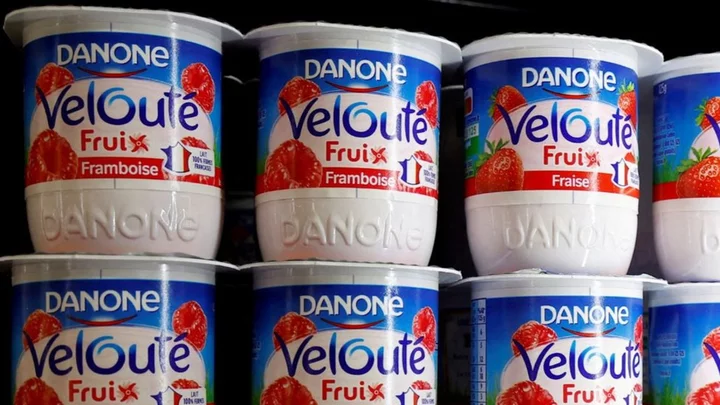
Russia seizes control of Danone and Carlsberg operations
Under a new order, the Danone and Carslberg units have been put in "temporary management" of the state.
2023-07-17 11:29

Nigeria's President Bola Tinubu declares state of emergency over food
The president plans to provide protection to farmers targeted by notorious kidnapping gangs.
2023-07-15 01:23
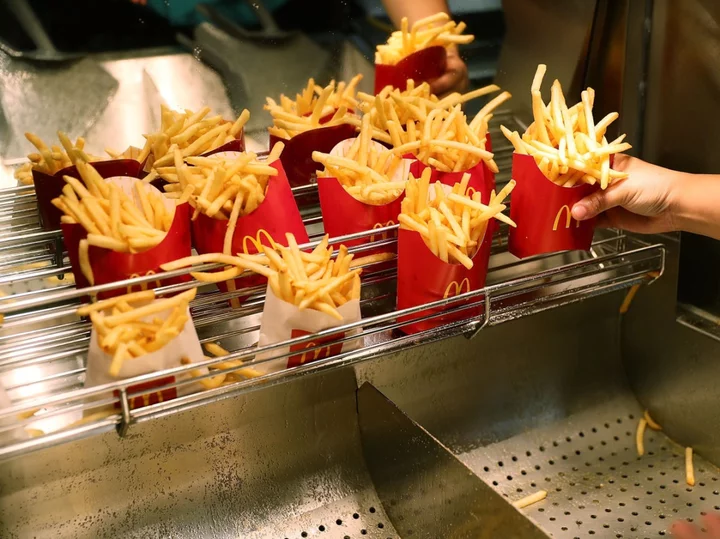
National French Fry Day: How to get free french fries from McDonald’s, Burger King and more
There’s nothing better than french fries. Now, foodies can snag the delicious treat free of charge (or discounted) on National French Fry Day 2023. National French Fry Day is celebrated in the US on Thursday 13 July. However, the exact date of this special holiday is still unclear. Many restaurants have petitioned to move National French Fry Day to the second Friday in July so that it’s always observed on a fry-day. Luckily for us, not all fast food chains have caught on yet, meaning many establishments are celebrating National French Fry Day all weekend long by giving away an order of their beloved crispy, golden fries. McDonald’s, Burger King, Wendy’s and more are all participating in the giveaway, but not all chains are made the same. Here’s how to get free french fries on National French Fry Day. McDonald’s McDonald’s announced it will be giving away complimentary french fries of any size on National French Fry Day via the McDonald’s app. Customers will need to make an account on the smartphone app, where they will be able to place an order for the free fries, no purchase necessary. Burger King At Burger King, members of the chain’s Royal Perks loyalty program can get a free order of fries of any size with any purchase via the app or BK.com. Wendy’s Wendy’s is celebrating National French Fry Day for the next three days until Sunday, 16 July. There, customers can receive a free order of fries, any size, with any purchase made using the Wendy’s app. Wendy’s will also be participating in National Ice Cream Day on Sunday, where fans can get a free small Frosty with purchase of a small order of fries through Grubhub. Checkers and Rally’s Checkers and Rally’s is offering Rewards App members a free order of extra large fries from Friday through Sunday. Carl’s Jr and Hardee’s When customers buy french fries on National French Fry day on the Carl’s Jr or Hardee’s app, they will be rewarded with free small fries each day for the rest of the year with a minimum $1 purchase. Del Taco Del Taco is giving away many deals through Sunday, including free medium fries with any $3 purchase through its Del Yeah! Rewards loyalty program. Fatburger Customers can receive a free order of Fat or Skinny fries with any purchase through Sunday. The offer can be redeemed in-store or online with the code FrenchFryDay23. Heinz Of course, the world’s most popular ketchup brand is also participating in National French Fry Day. This year, the company partnered with UberEats to offer $5.70 off on orders that include french fries at participating restaurants nationwide – Arby’s, Buffalo Wild Wings, BurgerFi, Carl’s Jr, Checkers, Chili’s, Freddy’s, Hardee’s, IHOP, and MOOYAH Burgers, Fries and Shakes. When UberEats customers choose a participating restaurant on the app and place any order that includes fries, a $5.70 discount will be applied at checkout. Jack in the Box On Thursday, members of the Jack Pack loyalty program can get a free large order of regular or curly fries with a $15 minimum purchase. Smashburger For National French Fry Day, Smashburger is giving away a free order of Smashfries, French Fries, or Sweet Potato Fries with any purchase – no minimum purchase required. The offer can be redeemed in-store or online by using the code FRIES. Read More Courteney Cox shares hilarious video of McDonald’s Grimace shake ‘effect’ McDonald’s fans are shocked to learn the purpose behind the buttons on drink lids McDonald’s fans seethe as price of popular UK menu item spikes 112% Burger King Thailand’s newest creation is just 20 slices of cheese between two buns Burger King launches ‘real cheeseburger’ stuffed with 20 slices of cheese Thrifty gamechanger: How to make pesto green bean spaghetti
2023-07-14 00:52

Thrifty gamechanger: How to make pesto green bean spaghetti
Our take on a north Italian pasta alla Genovese, this pesto and green bean spaghetti is a thrifty game-changer,” say Kate and Kay Allinson from Pinch of Nom. “Using just a few simple ingredients and one saucepan, you won’t believe how easy it is to prepare this spaghetti dish from scratch. By combining Parmesan with garlic, basil and zesty lemon juice, we’ve recreated a luscious green pesto sauce… Don’t forget to save your pasta water – it gives every twisty forkful an even silkier texture.” Pesto green bean spaghetti Serves: 4 Ingredients; 150g dried spaghetti 170g new potatoes, sliced 100g green beans, trimmed 60g fresh basil 4 garlic cloves, peeled 30g Parmesan cheese, finely grated Juice of 1 lemon Method: 1. Add the spaghetti and new potatoes to a large saucepan of boiling water. Cook for eight minutes until the potatoes and spaghetti are nearly done. Add the green beans and cook for another four minutes. 2. While the spaghetti is cooking, add the basil, garlic, Parmesan cheese and lemon juice to a food processor. Blitz until smooth. 3. Once the spaghetti, potatoes and green beans are cooked, drain (reserving a little of the cooking water). 4. Add the spaghetti, potato and green beans back to the pan and pour over the pesto mixture. Add one tablespoon of the reserved pasta water, stir and add a few extra tablespoons of water as needed (we added three tablespoons of the reserved pasta water to coat our pasta, but it depends on how thick your pesto is. Start with one tablespoon and go from there). The pesto should coat each spaghetti strand. Serve. ‘Pinch Of Nom: Budget’ by Kate and Kay Allinson (Bluebird, £17.99). Read More Get set for Wimbledon with top pastry chef’s strawberry recipes Pinch of Nom: Healthy eating doesn’t have to cost the earth ‘Deliciously indulgent’ one-pot chilli mac and cheese Can’t decide between a cookie or a brownie? Now you don’t have to The Norwegian sparkling wine aged at the bottom of the sea I was an air fryer sceptic – now I can’t stop using it
2023-07-13 18:56
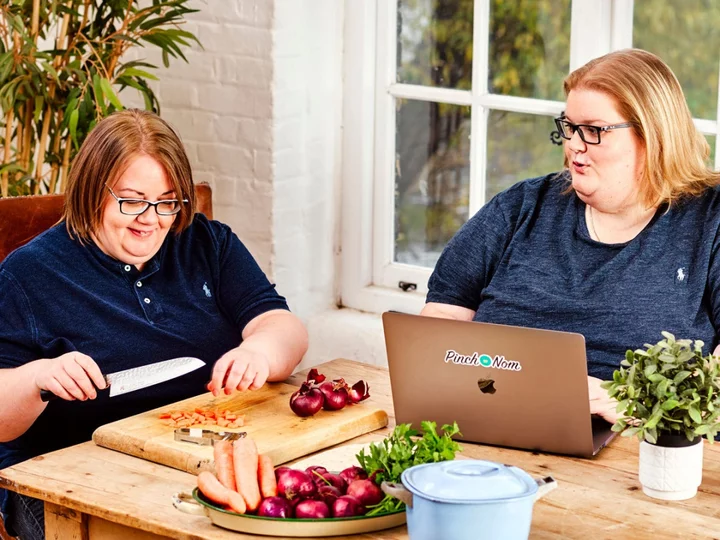
Pinch of Nom: Healthy eating doesn’t have to cost the earth
Despite holding the record for the second-fastest-selling non-fiction book in the UK since records began, Kate and Kay Allinson – the brains behind Pinch of Nom – are relatively private people. They don’t do many interviews and you won’t see them whipping up a storm on daytime cooking shows, yet the duo seem remarkably comfortable fielding questions about their latest cookbook, Pinch Of Nom: Budget. Kate, 52, is the softer-spoken of the two – she’s a trained chef – while Kay, 37, is more outgoing and talkative. The two have been together for 18 years and married for two. Their clashing personalities might come as a surprise, but they make it work – for example, by having two freezers. “One is my freezer, one is Kate’s – there’s a big difference between the two of them,” Kay says matter-of-factly. “I’ve got ADHD, so she has to put up with a lot. Kate’s the tidy, organised one – if I put it this way, if I’m putting the food shopping away, she’s like, ‘You’re not putting the food shopping away, I’m putting it away, because it’ll go away in some sort of order’.” Kay works with “lots of noise, lots of mess, lots of creativity, disorganisation”, she admits. “And Kate is the polar opposite – everything has to be quiet, everything has to be neat and tidy. I think it works because we complement each other in different ways. “You [she says to Kate] make sure I actually get through the day without harming myself, and I give you the ideas – so it works.” The two have made an empire with their healthy cookbooks. The first Pinch Of Nom cookbook came out in 2019 and sold 210,506 copies in the first week – the only non-fiction title to outstrip that is Spare by the Duke of Sussex. Their fanbase is loyal, and they have 1.2 million followers on Instagram – but don’t call them diet books (Kay doesn’t use the D-word, saying: “I hate it”.) Now, the duo are releasing their first book specifically geared towards wallet-friendly recipes – which felt like a natural progression. “Most of the recipes we’ve ever come up with, one of the main goals – apart from it being actual food you want to eat, because that always helps when you’re making a recipe book – is they’re easy to make, but also that they don’t break the bank,” Kay says. Kate adds to that thought: “Given our audience from day one, our audience has always been very family orientated.” “And running a family is expensive enough, especially at the minute – thank you Brexit,” Kay sighs. “Food inflation is not fun for anyone at the minute – it’s ridiculous out there, it’s crazy. The amount of people that rely on food banks – food poverty is a really big issue.” While there are no price guarantees with their recipes, most dishes come to under £2 to make and many cost even less – busting the misconception that healthy eating is expensive. “Whatever it is, you can make it expensive – there’s ways and means to do things,” Kay says. “If you want to do healthy food organically, it’s not going to come cheap. If you want to go to Daylesford Organic for your food, that’s fine. But most real people that live on a day-to-day basis will shop at one of the big four supermarkets or the big two discounters. We all know who they are. And we want people to be able to buy all the recipes and the ingredients in one place and not have to traipse around everywhere. “We want to make it as easy as possible – people are time-poor. Maintaining a family and making sure everyone is fed and looked after is hard enough – the last thing you need is to traipse around the big posh supermarket trying to find weird ingredients.” This could be the couple’s secret to success – they’re refreshingly normal, and even talk about their own “bumpy journey” with healthy eating. “We said last week, we’re going to meal plan all week – what didn’t we do? We didn’t get round to cooking the meals, because we’re busy doing other stuff – because that always happens,” Kay says – but all wasn’t lost, because they used their number one tip for keeping healthy and saving money: the freezer. “It’s always handy to have something in the freezer or in the fridge that on that day when you come home from work and you cannot be arsed – everyone has that day or that week. To be fair, it’s usually a couple of days,” says Kay. “Getting something out of the freezer that you know is going to taste good, you only have to heat it up – you don’t have to make it. Just having that reassurance that you can fall back on it.” Kate and Kay estimate there are around 3,000 Pinch of Nom recipes, created by themselves and their team. With such a vast number, do they ever get writer’s block? “We do get stuck for inspiration, quite often,” Kate admits – and in those scenarios, their first port of call is going to the Facebook group “and look to see what people want”. Kay jumps in: “We’ll ask them what they want to see. I used to post every week in the Facebook group without fail, ‘OK, tell us what dishes you want. What do you want a Nom version of?’ “Don’t get me wrong, there were some ridiculous requests – there is no way the chocolate cake from Matilda was ever going to be Nommable, that is just not going to happen. As much as I would love to be a magician and I would love for that to be real.” Other suggestions are a bit more feasible – and they’ve seen a big rise in demand for veggie recipes. “A lot of people – we’re the same, it’s not that we don’t like meat, but we’ve made a conscious choice to eat less meat, mainly because of cost. Meat costs a fortune, and if you can get your protein from plants, then yay – it’s a good thing,” Kay says. “So we’ve had an awful lot of veggies recently, or people just wanting to cut down on meat – and I’m assuming it’s because it’s friggin’ expensive.” Another trend that will never go away? “We still get loads of fakeaway requests,” Kay says. “Fakeaways are never going to disappear, ever.” Kay adds: “We like to give people a decent amount of stuff that isn’t quite as calorific as it would ordinarily be, but enough so you have something to look forward to in the week. Everyone needs a bit of a treat, because it’s no fun – when people think of diets, they think of lettuce. I do, and I’m like – it’s a bit boring. Sod that.” ‘Pinch Of Nom: Budget’ by Kate and Kay Allinson (Bluebird, £17.99). Read More Get set for Wimbledon with top pastry chef’s strawberry recipes The Norwegian sparkling wine aged at the bottom of the sea I was an air fryer sceptic – now I can’t stop using it Ditch Deliveroo – make these healthy, 30-minute pizzas instead Three quick and easy vegan fakeaway recipes The dish that defines me: Eddie Huang’s Taiwanese beef noodle soup
2023-07-13 18:29
